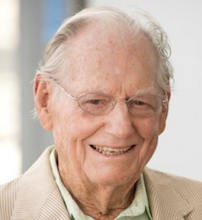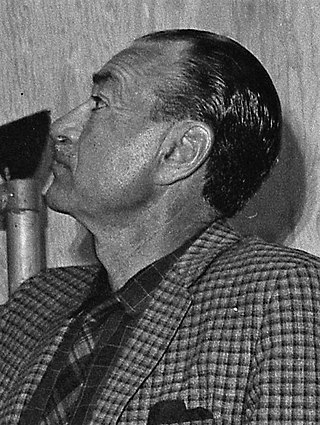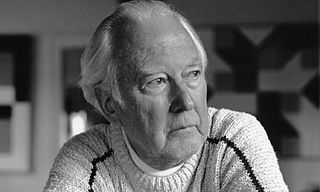Related Research Articles

Morton Wayne Thiebaud was an American painter known for his colorful works depicting commonplace objects—pies, lipsticks, paint cans, ice cream cones, pastries, and hot dogs—as well as for his landscapes and figure paintings. Thiebaud is associated with the pop art movement because of his interest in objects of mass culture, although his early works, executed during the fifties and sixties, slightly predate the works of the classic pop artists. Thiebaud used heavy pigment and exaggerated colors to depict his subjects, and the well-defined shadows characteristic of advertisements are almost always included in his work.

John Anthony Baldessari was an American conceptual artist known for his work featuring found photography and appropriated images. He lived and worked in Santa Monica and Venice, California.

The Museum of Contemporary Art San Diego, in San Diego, California, US, is an art museum focused on the collection, preservation, exhibition, and interpretation of works of art from 1950 to the present.
The Bay Area Figurative Movement was a mid-20th Century art movement made up of a group of artists in the San Francisco Bay Area who abandoned working in the prevailing style of Abstract Expressionism in favor of a return to figuration in painting during the 1950s and onward into the 1960s. Spanning two decades, this art movement is often broken down into three groups, or generations: the First Generation, the Bridge Generation, and the Second Generation.
Salomón Huerta is a painter based in Los Angeles, California. Huerta was born in Tijuana, Mexico, and grew up in the Boyle Heights Projects in East Los Angeles. Huerta received a full scholarship to attend the Art Center College of Design in Pasadena and completed his MFA at UCLA in 1998. Huerta gained critical acclaim and commercial attention in the late 1990s for his minimalist portraits of the backs of people's heads and color-saturated depictions of domestic urban architecture. He was included in the 2000 Whitney Biennial and has been featured in numerous exhibitions around the US, Europe, and Latin America such as The Gagosian Gallery in London, England, and Studio La Città in Verona, Italy.

John Harvey McCracken was a minimalist artist. He lived and worked in Los Angeles, Santa Fe, New Mexico, and New York.

Don Suggs was an American artist based in Los Angeles, California. His paintings, drawings, photographs and sculptures are notable for their use of color.
John Sonsini is an artist based in Los Angeles who paints primarily with oils. His best known work is portraits of Latino day laborers, where Sonsini offered his subjects their usual wage in exchange for sitting for the paintings. He has also made work based on gay male erotica.

Karl Stanley Benjamin was an American painter of vibrant geometric abstractions, who rose to fame in 1959 as one of four Los Angeles-based Abstract Classicists and subsequently produced a critically acclaimed body of work that explores a vast array of color relationships. Working quietly at his home in Claremont, CA, he developed a rich vocabulary of colors and hard-edge shapes in masterful compositions of tightly balanced repose or high-spirited energy. At once intuitive and systematic, the artist was, in the words of critic Christopher Knight, "a colorist of great wit and inventiveness."
Roger Edward Kuntz was a highly accomplished Southern California landscape painter and a member of the Claremont Group of painters - professors and graduates of Pomona College, Scripps College, and the Claremont Graduate School. A figurative artist with an eye for abstract form, he won critical acclaim for striking compositions that transform an unusual array of subjects, including tennis players, domestic interiors, freeways, road signs, bathtubs and the Goodyear Blimp. A retrospective exhibition of his work, at the Laguna Art Museum in Laguna Beach, CA in 2009, was aptly titled "Roger Kuntz: The Shadow Between Representation and Abstraction". In the exhibition catalogue, curator Susan M. Anderson wrote: "Kuntz's work of the late 1950s and early 1960s quintessentially embodied the experimentation, fragmentation, and paradox in American culture of the time."

Edward Biberman was an American artist active in the mid-twentieth century. His work ranged from stylised portraits to history-inspired murals, and drew on the emerging urban landscapes of southern California, and on current events such as the Great Depression, the Second World War, and labour unrest.

Kenneth Hayes Miller was an American painter, printmaker, and teacher.
Maxwell Hendler is an American painter. In 1975, he became the first contemporary artist to have pictures in the collection of the Metropolitan Museum of Art in New York.

John Dwyer McLaughlin was an American abstract painter. Based primarily in California, he was a pioneer in minimalism and hard-edge painting. Considered one of the most significant Californian postwar artists, McLaughlin painted a focused body of geometric works that are completely devoid of any connection to everyday experience and objects, inspired by the Japanese notion of the void. He aimed to create paintings devoid of any object hood including but not limited to a gestures, representations and figuration. This led him to the rectangle. Leveraging a technique of layering rectangular bars on adjacent planes, McLaughlin creates works that provoke introspection and, consequently, a greater understanding of one's relationship to nature.

The terms California Impressionism and California Plein-Air Painting describe the large movement of 20th century California artists who worked out of doors, directly from nature in California, United States. Their work became popular in the San Francisco Bay Area and Southern California in the first three decades after the turn of the 20th century. Considered to be a regional variation on American Impressionism, the California Impressionists are a subset of the California Plein-Air School.

Frederick Hammersley was an American abstract painter. His participation in the 1959 Four Abstract Classicists exhibit secured his place in art history.

Peter Plagens is an American artist, art critic, and novelist based in New York City. He is most widely known for his longstanding contributions to Artforum and Newsweek, and for what critics have called a remarkably consistent, five-decade-long body of abstract formalist painting. Plagens has written three books on art, Bruce Nauman: The True Artist (2014), Moonlight Blues: An Artist's Art Criticism (1986) and Sunshine Muse: Modern Art on the West Coast, 1945-70 (1974), and two novels, The Art Critic (2008) and Time for Robo (1999). He has been awarded major fellowships for both his painting and his writing. Plagens's work has been featured in surveys at the Museum of Modern Art, Los Angeles County Museum of Art (LACMA), Whitney Museum, and PS1, and in solo exhibitions at the Hirshhorn Museum and Las Vegas Art Museum. In 2004, the USC Fisher Gallery organized and held a 30-year traveling retrospective of his work. Critics have contrasted the purely visual dialogue his art creates—often generating more questions than answers—with the directness of his writing; they also contend that the visibility of his bylines as a critic has sometimes overshadowed his artmaking—unduly. Los Angeles Times critic David Pagel described Plagens's painting as a "fusion of high-flying refinement and everyday awkwardness" with an intellectual savvy, disdain for snobbery and ungainliness he likened to Willem de Kooning's work. Reviewing Plagens's 2018 exhibition, New York Times critic Roberta Smith called the show an "eye-teasing sandwich of contrasting formalist strategies," the hard-won result of a decade of focused experimentation.
James Hayward is a contemporary abstract painter who lives and works in Moorpark, California. Hayward's paintings are usually divided in two bodies of work: flat paintings (1975-1984) and thick paintings. He works in series, some of which are ongoing, and include The Annunciations, The Stations of the Cross, the Red Maps, Fire Paintings, Smoke Paintings, Sacred and Profane and Nothing's Perfect series.

Charles Reiffel was an American lithographer and post-Impressionist painter who became "one of California's best-known painters."
Elizabeth Armstrong is an American curator of contemporary and modern art. Beginning in the late 1980s, she served in chief curatorial and leadership roles at the Walker Art Center, Museum of Contemporary Art, San Diego, Orange County Museum of Art (OCMA), Minneapolis Institute of Arts and Palm Springs Art Museum. She has organized numerous touring exhibitions and catalogues that gained national and international attention; among the best known are: "In the Spirit of Fluxus", "Ultrabaroque: Aspects of Post-Latin American Art", and "Birth of the Cool: California Art, Design, and Culture at Midcentury". She is also known for organizing three California Biennials (2002–6) and notable exhibitions of David Reed and Mary Heilmann. Armstrong's curatorial work and publications have been recognized by the Andy Warhol Foundation, the Center for Curatorial Leadership, the Getty Foundation Pacific Standard Time project and the National Endowment for the Arts, among other organizations.
References
- ↑ Pagel, David (March 12, 1999). "John M. Miller's Paintings Angle to Get the Viewer's Attention". Los Angeles Times .
- ↑ Knight, Christopher (October 2, 1994). "Beyond the Buzz of Art : John M. Miller's minimalist but loopy works offer a wellspring of expression". Los Angeles Times .
- ↑ "John M. Miller: All Or Nothing (At All)". Diane Rosenstein Fine Art. Retrieved 14 April 2016.